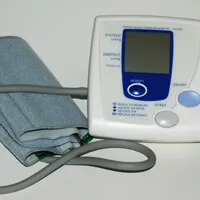
- Share on Facebook3
- Share on Pinterest
- Share on Twitter
Q. I have high blood pressure. Is it worth it to buy a blood pressure monitor to check my pressure at home?
 A. Yes. Habitual home blood pressure checks give a more accurate view of your blood pressure than intermittent office-based readings or occasional checks at your drugstore. Home monitoring is particularly helpful for evaluating the effectiveness of lifestyle changes or medications aimed at lowering your blood pressure.
A. Yes. Habitual home blood pressure checks give a more accurate view of your blood pressure than intermittent office-based readings or occasional checks at your drugstore. Home monitoring is particularly helpful for evaluating the effectiveness of lifestyle changes or medications aimed at lowering your blood pressure.
I recommend you buy a monitor that doesn’t require a stethoscope, with a cuff that wraps around your upper arm. Arm cuff monitors are generally more accurate than wrist or finger cuffs. Monitors are available at most pharmacies and medical supply stores, as well as on the Internet. The Dabl Educational Trust website (www.dableducational.org) has lots of useful information. Before you start using your monitor, have it checked at your doctor’s office to be sure it’s accurate.
When taking your blood pressure, wrap the cuff around your bare arm and then sit with both feet on the ground for about five minutes. Follow the directions on your monitor and record the systolic pressure (the upper number) and diastolic pressure (the lower number). Normal systolic blood pressure is 120 and normal diastolic pressure is 80. If your reading is high, relax for two to three minutes and then take your blood pressure again. Don’t check your blood pressure within 30 minutes of exercising or after drinking a caffeinated or alcoholic beverage.
When you’re just starting out or judging the effectiveness of a new treatment, it’s wise to take your blood pressure every morning and evening for about a week. Once your blood pressure and treatment are optimized, you only need to take your blood pressure a few days a month, or as your doctor recommends.
– Celeste Robb-Nicholson, M.D., Editor in Chief, Harvard Women’s Health Watch
(C) 2012. PRESIDENT AND FELLOWS OF HARVARD COLLGE. ALL RIGHTS RESERVED DISTRIBUTED BY TRIBUNE MEDIA SERVICES, INC.
- Share on Facebook3
- Share on Pinterest
- Share on Twitter

